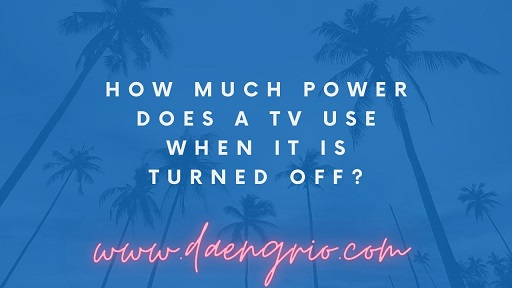While it’s easy to forget that even when a TV is switched off, it actually consumes less energy than you might believe. A typical television consumes 60 watts of power when in operation and only 0.6 watts when in standby mode. This equates to a yearly energy use of 108 kWh. However, if you have a smart wake-enabled TV, this figure can reach 12.5 watts. This can be more than doubled if you reside in an area with high electricity costs.

A television’s power consumption is determined by a variety of factors, including the type of set, its age, and the size of the screen. Despite this, the amount of electricity consumed by a television is still largely controlled by how frequently it is used. The more time you spend watching television, the greater your monthly electric bill. There are, however, various ways to lower your electricity consumption while still watching your favorite shows. Choosing an energy-efficient television is one approach to reduce your monthly expense.
Using a wattmeter to measure your TV’s power consumption might help you make an informed purchase decision. The wattmeter can immediately tell you how much electricity your TV consumes and provide you with a variety of options. You may also learn how much solar battery power your TV requires to stay on during a power outage.
Unplugging your television is another way to reduce your energy consumption. Some televisions include backup batteries that use electricity when the television is in standby mode. A backup battery can often store up to 10 kWh of power, which is sufficient to watch one movie for a whole evening. As a result, you should always be careful of your energy use and attempt to restrict the amount of time you spend in front of the television.
The amount of electricity used by a television when it is turned on varies substantially based on its size and usage. Most televisions use 0.5 watts in standby mode, which is not a big amount but can pile up over the course of a year.
A television uses between 80 and 400 watts, depending on its size, technology, and model. A TV’s average electricity cost is 13 cents per kilowatt-hour. This indicates that a five-hour-a-day television will use approximately $0.13 kWh and will cost you between $1.81 and $7.13 per month to run.
A 32-inch flat-screen LED TV uses 0.2 kWh each day, which equates to approximately PS11 per year. By reducing standby power usage, you might save hundreds of dollars per year.